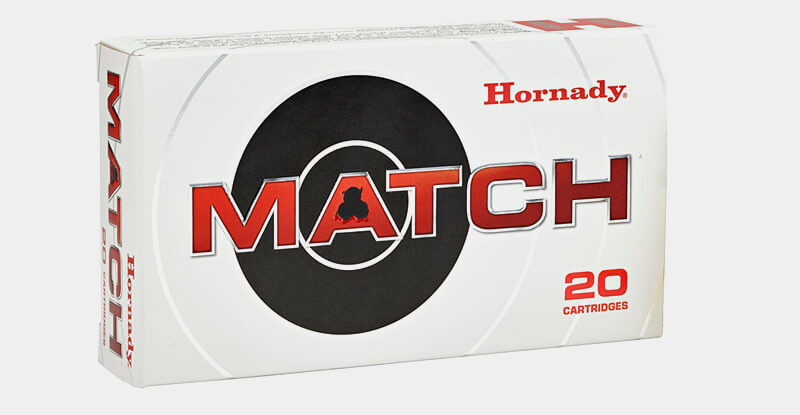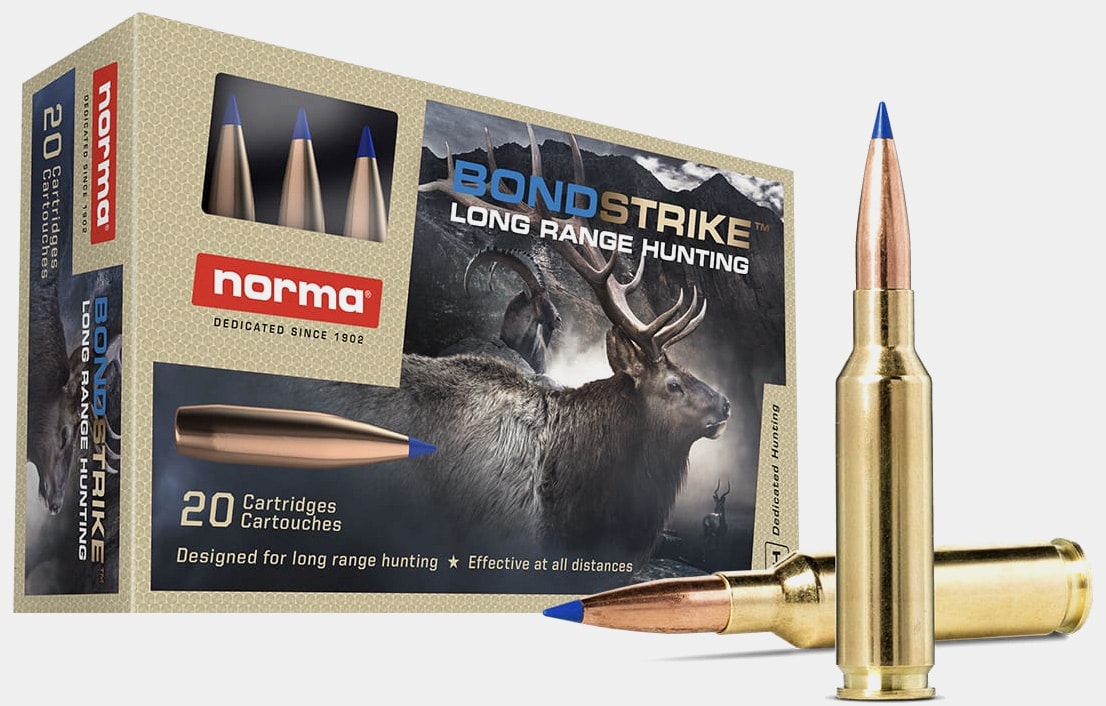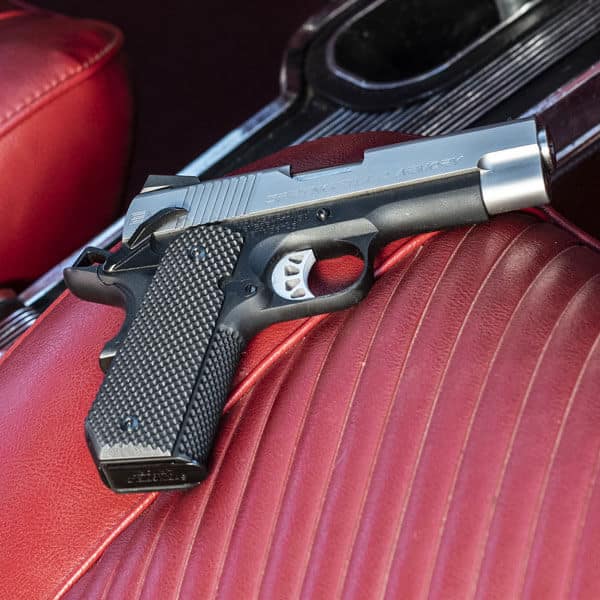Springfield Model 2020 Redline Review — A Lightweight Rifle in 6.5 CM
November 11th, 2024
9 minute read
In this Springfield Armory Model 2020 Redline rifle review, Joe Woolley takes a look at the 20″ barrel model chambered for the 6.5 Creedmoor cartridge. The firearm is impressive with its Grayboe Trekker stock, carbon fiber barrel and accuracy guarantee. But, how does it perform in the backcountry? Does the Model 2020 action deliver? Read on to get Woolley’s full take on the gun. Springfield provided a loaner gun to the author for this review.
How many times have we watched life turn an interesting intellectual exercise into an actual real-world requirement? You know, those times when subjects speculated upon over countless adult beverages after a local shooting match all of a sudden become reality?
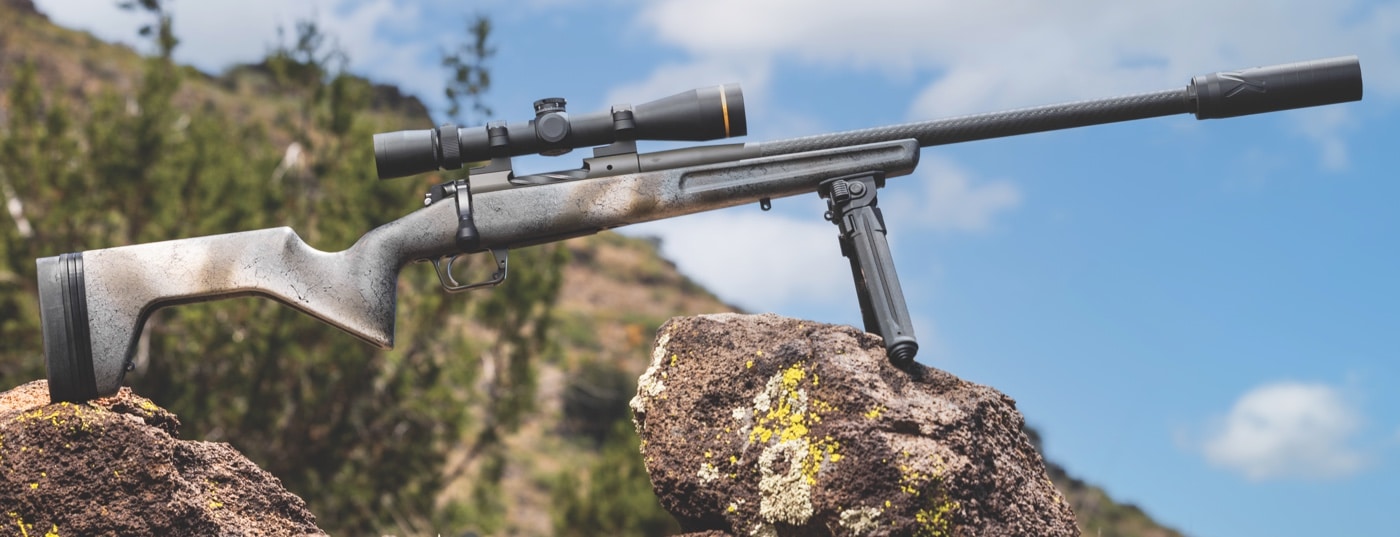
I myself have indulged in numerous “what if” games just to pass the time. One of the most commonly touched on is, if I had to get out of the house right now and be able to defend myself, what I would take with me? Great hypothetical situation, right? That is, until you find yourself in a dangerous and unforeseen situation where you do have to make that kind of decision.
My personal “Go Bag” would pack food, water, prescription meds, first aid supplies, a few clothes, and at least two guns — a concealable pistol and a capable rifle. The first one’s self-defense-oriented role and purpose should be obvious. But what about that second one? In this situation, a rifle could serve two roles. Clearly, it could act as a means of personal defense. But, it also could be used as a hunting rifle to acquire food.
My Choice: Bolt-Action, Short-Action Rifle
Through a lot of reading and testing, I settled on a short-action bolt-action rifle with a detachable magazine for the long gun. I wanted sufficient energy and some extra firepower. The most common choice in this type of rifle would be .308 Win., and it is a great option.
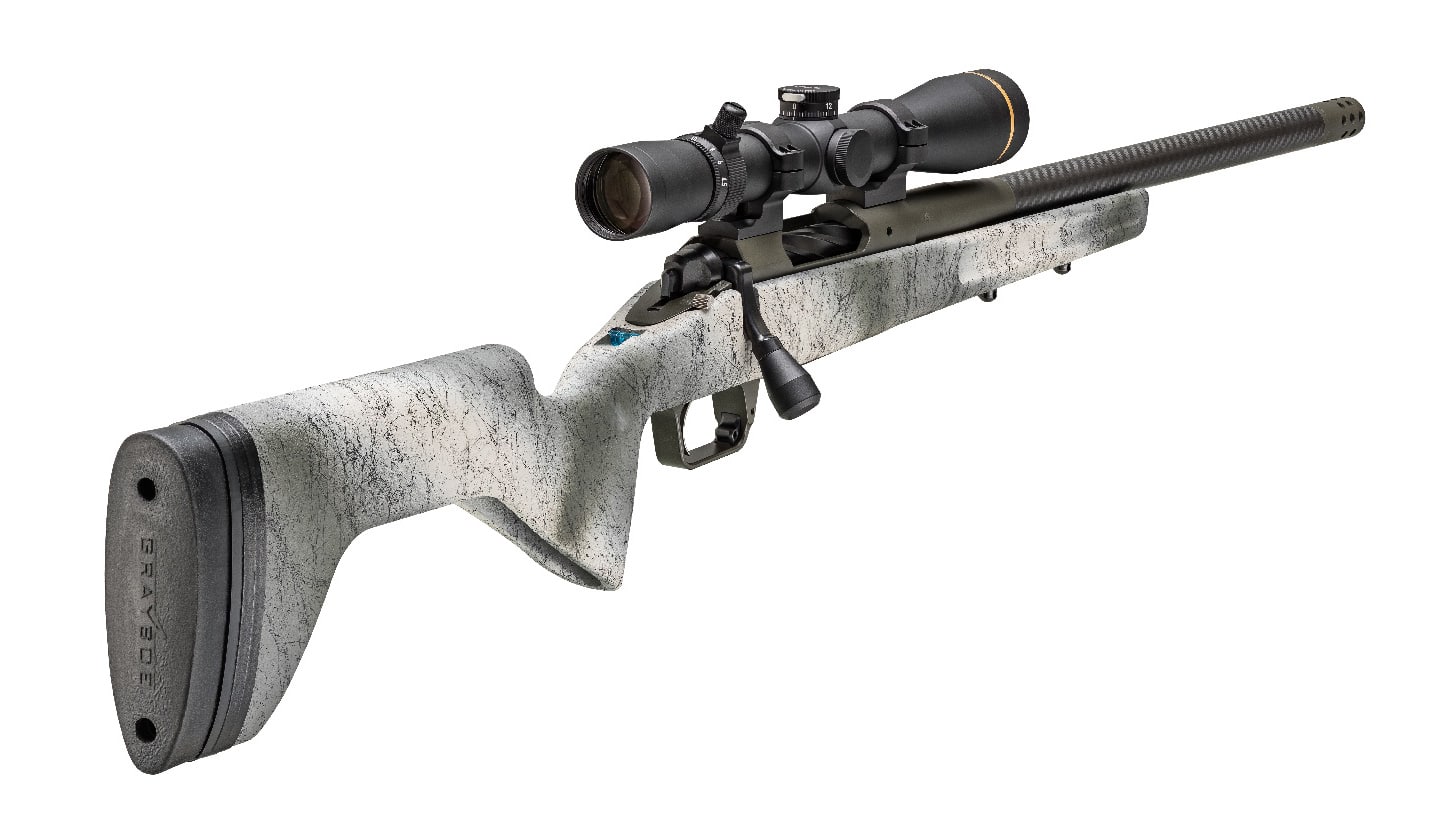
However, the 6.5 Creedmoor recently caught my eye. Though not perfect for everything (what is?), it does many things very well, leaving it as my pick for an all-around rifle cartridge. Yours may be different and still be just as correct.
The platform is just as important, if not more so. It needs to be short enough to handle, long enough to wring out all possible energy, stout enough to be accurate, and light enough to carry. I may have finally found my answer in a rifle from Springfield Armory.
My Model 2020 Redline Rifle
The Springfield Armory Model 2020 Redline bolt-action rifle is an offshoot of their Model 2020 Waypoint line. I have had the opportunity to work with two Waypoint rifles in the past, with one of those chambered in 6.5 Precision Rifle Cartridge (PRC), and the other in 7mm PRC. Both rifles were superbly accurate, and built with a little weight to help hold down recoil a bit.
The Model 2020 Redline contains much the same DNA as the Waypoint, but does so in a trim and powerful package. Strictly a short-action rifle, it is offered in either .308 or 6.5 Creedmoor (CM) chamberings with either a 16” or a 20” threaded barrel (topped off with an SA Radial Brake). I selected a 20” 6.5 CM. The result is a rifle that is handy and portable, and weighs in at a light 6 lbs., 4 oz.
A Backcountry Rifle
Two trends seem to be guiding the design of the latest generation of rifles. The first is a whole new crop of people walking into wherever they are hunting and packing everything on their back. “Mountain rifles,” like those produced by the late Melvin Forbes, have been available for a generation now. They are also very expensive and difficult to obtain.
The second trend is all about the expansion of the use of suppressors. Add one onto the end of a traditional full-length barrel, and you have a rifle somewhat more difficult to carry and manipulate. Accordingly, many manufacturers are building their rifles with shorter barrels. Yes, there is a slight loss in velocity versus the longer barrel, but what you gain in maneuverability is substantial.
Details of the Lightweight Hunting Rifle
Springfield Armory starts its new Redline rifle with a stainless-steel receiver. I learned that it is machined after hardening, with their engineers explaining to me that, “the receiver itself is machined from a pre-hardened solid bar, so that the dimensional accuracy is not diminished after heat treating.”
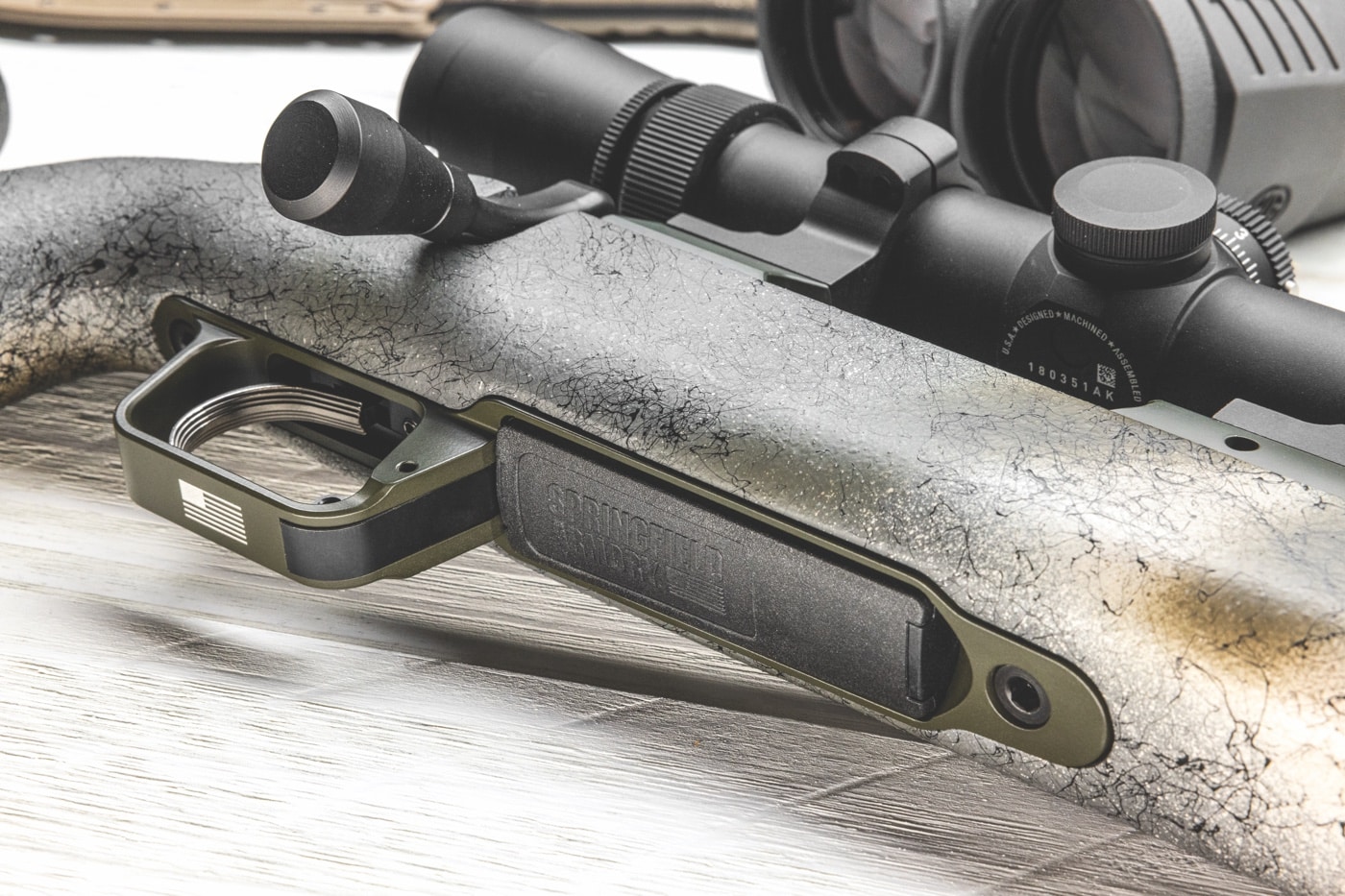
This is one of the places where Springfield’s use of electrical discharge machining (EDM) and its ability to work to incredibly tight tolerances in hard metals comes in handy. The EDM process also leaves the finished metal very smooth — something that obviously contributes to the butter-slick bolt movement in all the Model 2020 rifles. Additionally, the bolt can be easily disassembled without tools for cleaning.
The rifle’s two-lugged bolt is fluted, helping cut weight. It employs a spring-loaded, plunger-style ejector and a sliding plate extractor. Dual cocking cams lighten the effort required to operate the bolt, as does an oversized bolt handle. The bolt knob is threaded and can be changed out as desired. The bolt then receives a nitride finish while the receiver — and most of the other metal parts — on the Redline gets an H-264 green Cerakote coating. Topping off the action is a Picatinny rail scope mount.
Springfield then assembled a variety of outstanding parts to complete the rifle. Of note is the fact that the action follows the Model 700 pattern, so there are a ton of aftermarket parts available.
Grayboe Trekker Stock
I am always pleased to see a good carbon fiber-wrapped barrel (more about that in a minute), but the unique geometry of the stock grabbed my attention most. The Redline uses a Trekker model stock from Grayboe. If you haven’t heard of the company, its immediate corporate roots can be traced back to McMillan. It appears that they learned their craft well. It is a minimalist stock, but then it isn’t.

Designed with the backwoods hunter in mind, the Trekker provides a great platform for the Redline without adding any unnecessary structure. The forend extends 9.5” in front of the receiver. The barrel channel is wide and free-floats the 20” tube of my test gun, leaving plenty of open space. The sides on the forend don’t reach to the bore axis of the barrel, leaving a structure that seems to cradle the barrel more than surrounding it. The bottom of the forend is flat, allowing it to sit correctly on bags or bipod.
Speaking on putting the rifle on a bag, there is also a very unique bubble level integrated into the stock atop the pistol grip and just behind the action. This gives you immediate visual access to whether or not your rifle is situated correctly. A really cool feature.
Then there is the buttstock end of the stock. The pistol grip extends almost vertically, allowing a more proper position for the wrist and thus, potentially, better trigger control. The wrist is thin and promotes a strong-side thumb placement, again aiding trigger control. The comb has a neutral slant to it, leaving a level cheekpiece as high as a removable bolt will allow it to be.
The recoil pad is soft, thick rubber for those slightly more recoil averse. Length of pull is adjustable via spacers from 13.25” to 14.25” (and out to 16” with additional spacers). Since I like to square my shoulder up perpendicular to the rifle, I took all the spacers out and left it with an overall length of 40.5”. There are two sling swivel studs on the forend, making attachment of a Harris bipod a snap.
Oh, and the buttstock is hollow. Really. This Grayboe stock is open at the bottom and made completely of fiberglass, so there is no cheap filler needed in this design. The net result is a very lightweight, very strong stock, which is easy to maneuver and shoot well.
TriggerTech Trigger and Carbon Fiber Barrel
The stock is inlet for an AICS-pattern magazine, and the bottom metal actually is metal — and of good aerospace quality. Since ease of carry is very important for this genre of rifle, a flush-fitting, three-round magazine made by MDT is included with the rifle. During testing, I also tried out 10- and 12-round magazines from American Rifle Company, MDT and AccurateMag, all of which worked perfectly.
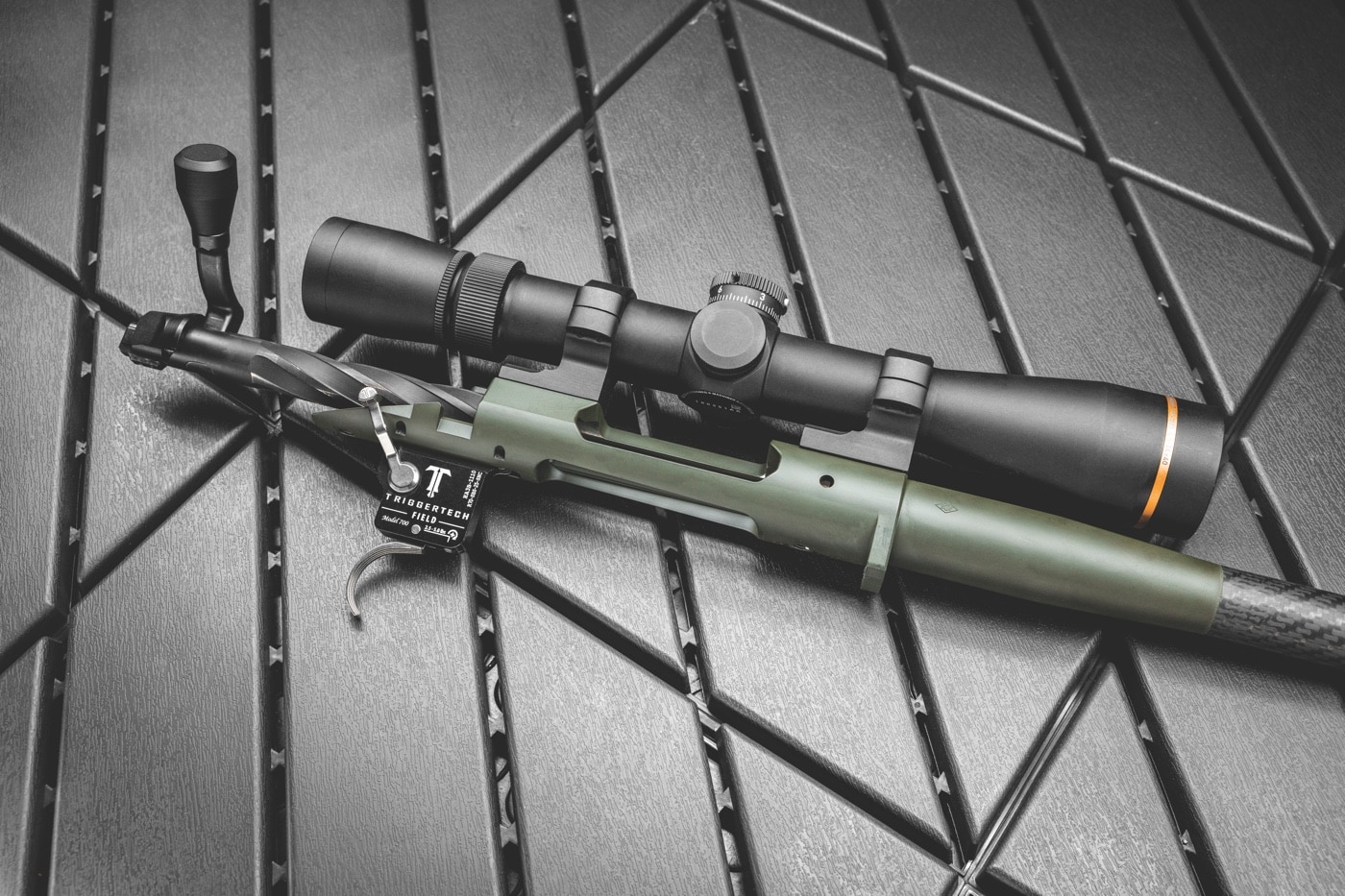
The barrel, as we would expect on a lightweight rifle from Springfield Armory, is a carbon-fiber wrapped, 20” tube from BSF. This barrel, in contrast to most others, allows very little contact between the wrap and the stainless-steel core. The end result is a very accurate barrel that heats up more slowly and cools off more quickly than most other methods.
Springfield Armory matched the barrel up with a TriggerTech adjustable trigger. A good trigger does not make a firearm more accurate, but it can certainly make it easier to shoot accurately. This TriggerTech switch is easily adjustable in the field from 2.5 lbs. to 5 lbs. Mine started out at 2.45 lbs. as determined by 10 pulls on our Lyman digital trigger gauge.
Model 2020 Redline Specifications
| Chambering | 6.5 CM (tested) |
| Barrel | 20” (tested), carbon fiber |
| Weight | 6 lbs., 4 oz. |
| Overall Length | 40.5″-41.75″ |
| Sights | N/A, Picatinny rail |
| Stock | Grayboe Trekker |
| Action | Bolt-action |
| Finish | Green Cerakote |
| Capacity | 3 (one magazine) |
| MSRP | $2,299 |
Testing the Model 2020 Redline on the Shooting Range
The compilation of all of these outstanding components turned out to be a very accurate rifle for me. Springfield guarantees sub-.75 MOA three-shot groups for all their Model 2020 rifles (assuming that the shooter is using match-grade ammo and is a skilled shooter).
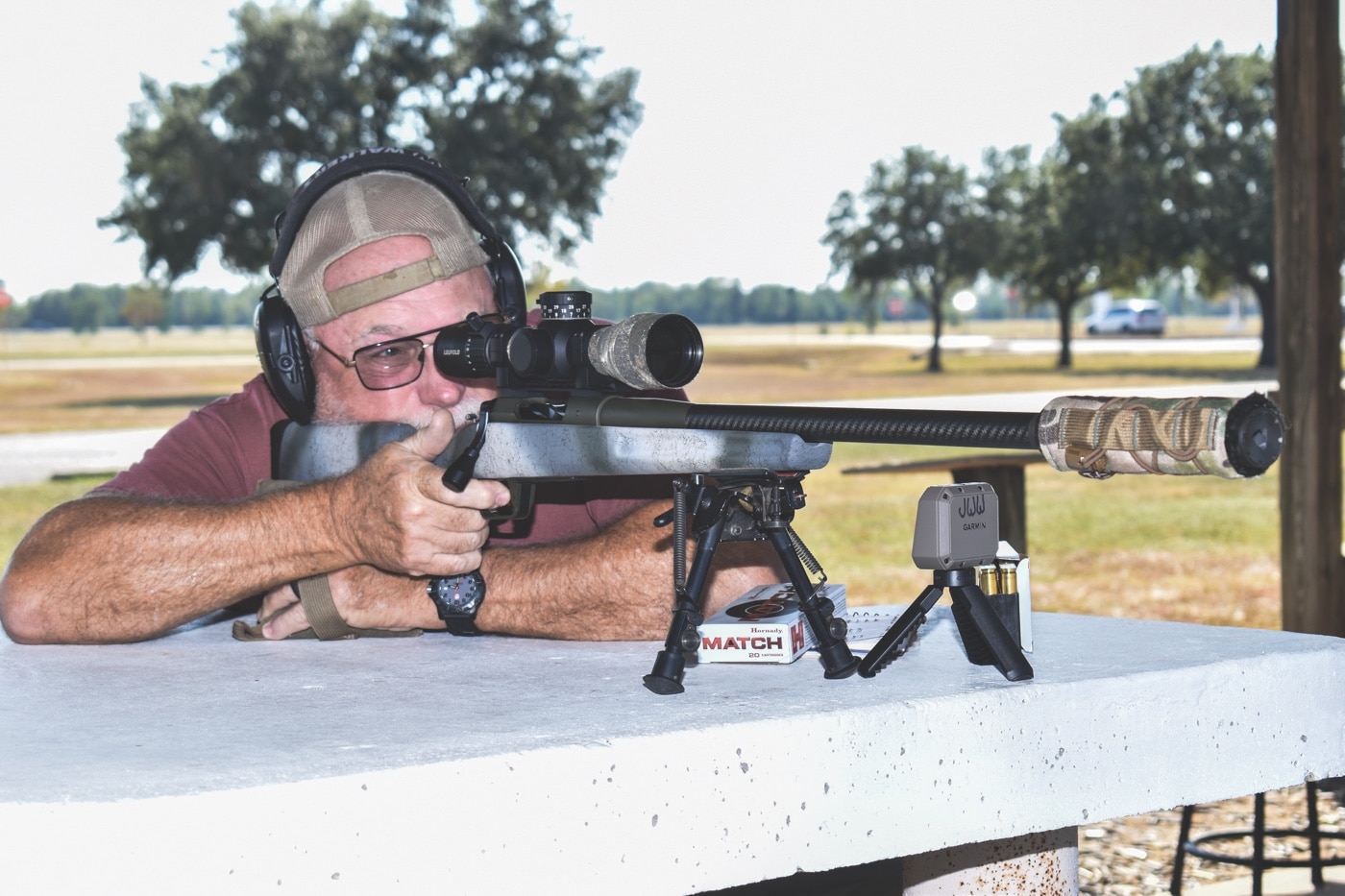
My initial testing included three different types of ammo and three different weight projectiles. I started off with a bargain-priced offering from Aguila loaded with 129-gr. Interlock bullets from Hornady. Decades-old technology still averaged .73 inch three-shot groups. Next came Hornady 140-gr. ELD Match ammunition and a .66” average. That was duplicated by Norma 143-gr. Bondstrike ammo. I also tested it with a suppressor mounted and got a slightly tighter grouping overall of the average of all three loads. Clearly, this rifle is a shooter.
Shooting Performance
| Avg. Velocity | Best Group | Avg. Group | |
|---|---|---|---|
| Aguila 129-gr. Interlock | 2,778 fps | 0.67″ | 0.73″ |
| Hornady 140-gr. ELD Match | 2,638 fps | 0.61″ | 0.66″ |
| Norma 143-gr. Bondstrike | 2,651 fps | 0.44″ | 0.66″ |
The very design of the 6.5 CM cartridge and the tight chamber specs for it seem to produce an inherently accurate combination. But there is more to the 6.5 CM. Recoil is moderate — which is a great thing in a lightweight rifle like the Redline — yet it still produces sufficient energy for most needs. Our recoil calculator shows that this Redline/ammo combo produces less than 12 ft-lbs. of free recoil energy in a rifle that weighs about 8 lbs. fully kitted out.
I’ve been using Bryan Litz’s Applied Ballistics mobile application in hunting and competition situations for years. When I look up the numbers in his app for the Norma 143-gr. BondStrike ammo I shot in the rifle (and used in the recoil calculations), I see some very encouraging stats. Energy at the muzzle for a 143-gr. bullet going 2,651 feet per second (fps) was just over 2,200 ft-lbs.
Many “experts” tell us that 1,500 ft-lbs. of energy at the point of impact will do the job on an elk-sized animal, while 1,000 ft-lbs. should suffice on deer or antelope. The Norma cartridge in this Redline generates 1,500 ft-lbs. to about 325 yards and 1,000 ft-lbs. to about 650 yards — ranges that should account for the majority of hunting situations. I noted that the same bullet would stay supersonic (something that bodes well for long-range shooting) out to about 1,300 yards.
Final Thoughts
For the shooter, the right components assembled the right way add up to a rifle that is light enough to carry, short enough to maneuver, powerful enough to take care of most situations, and all while being gentle on the shoulder. Now, maybe you see why this is my new all-around rifle and a definite part of my “Go Bag” plan.
Editor’s Note: Please be sure to check out The Armory Life Forum, where you can comment about our daily articles, as well as just talk guns and gear. Click the “Go To Forum Thread” link below to jump in!
Join the Discussion
Featured in this article
Continue Reading
Did you enjoy this article?

 114
114






